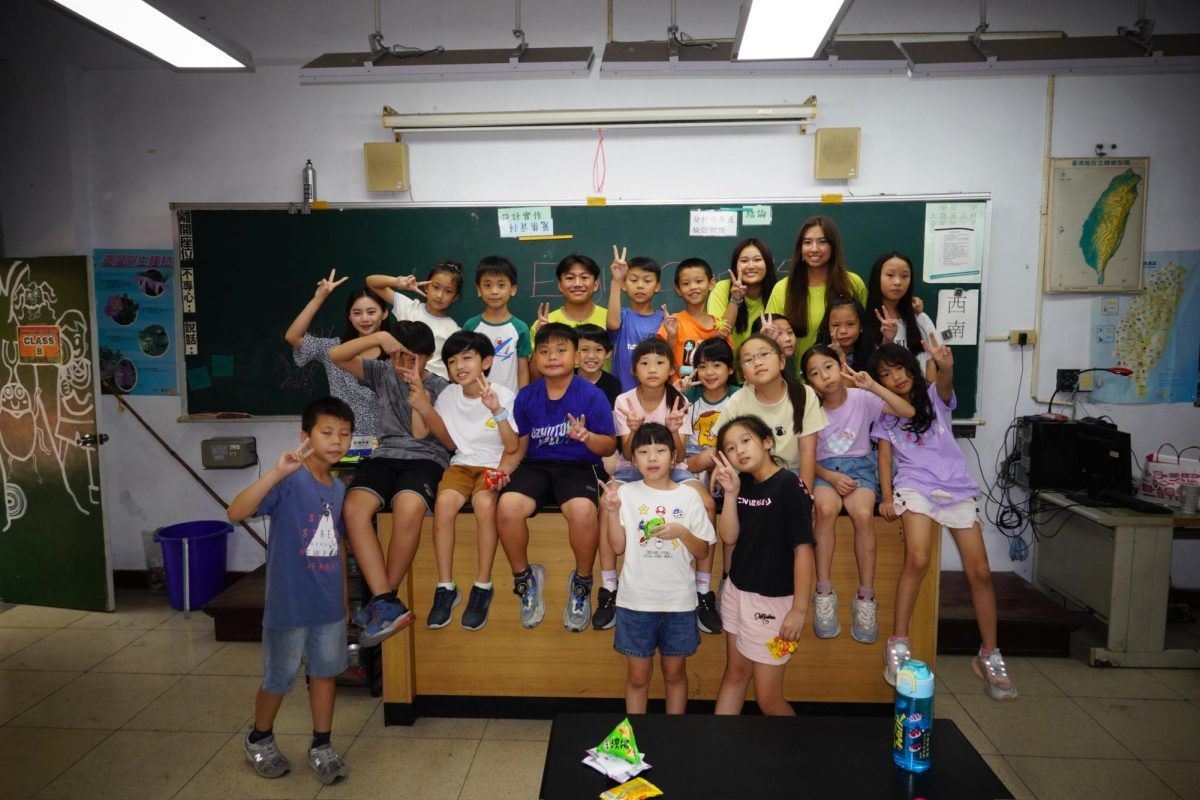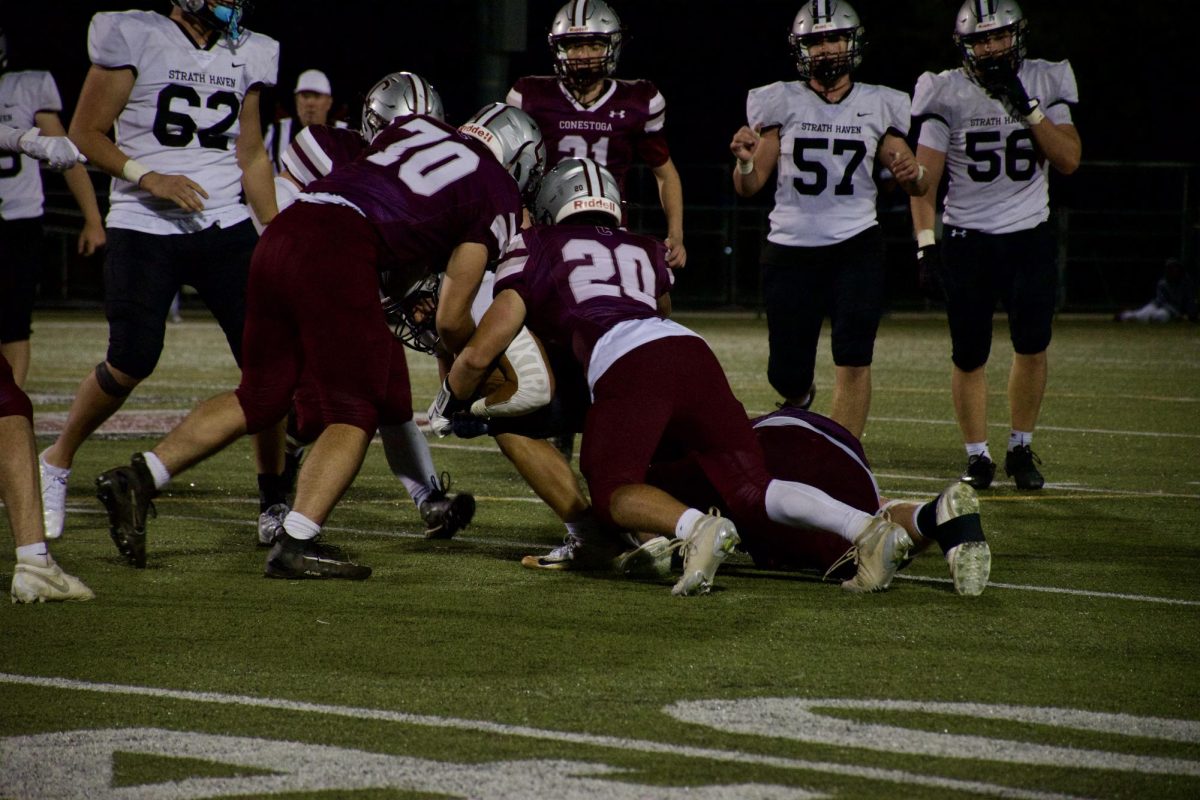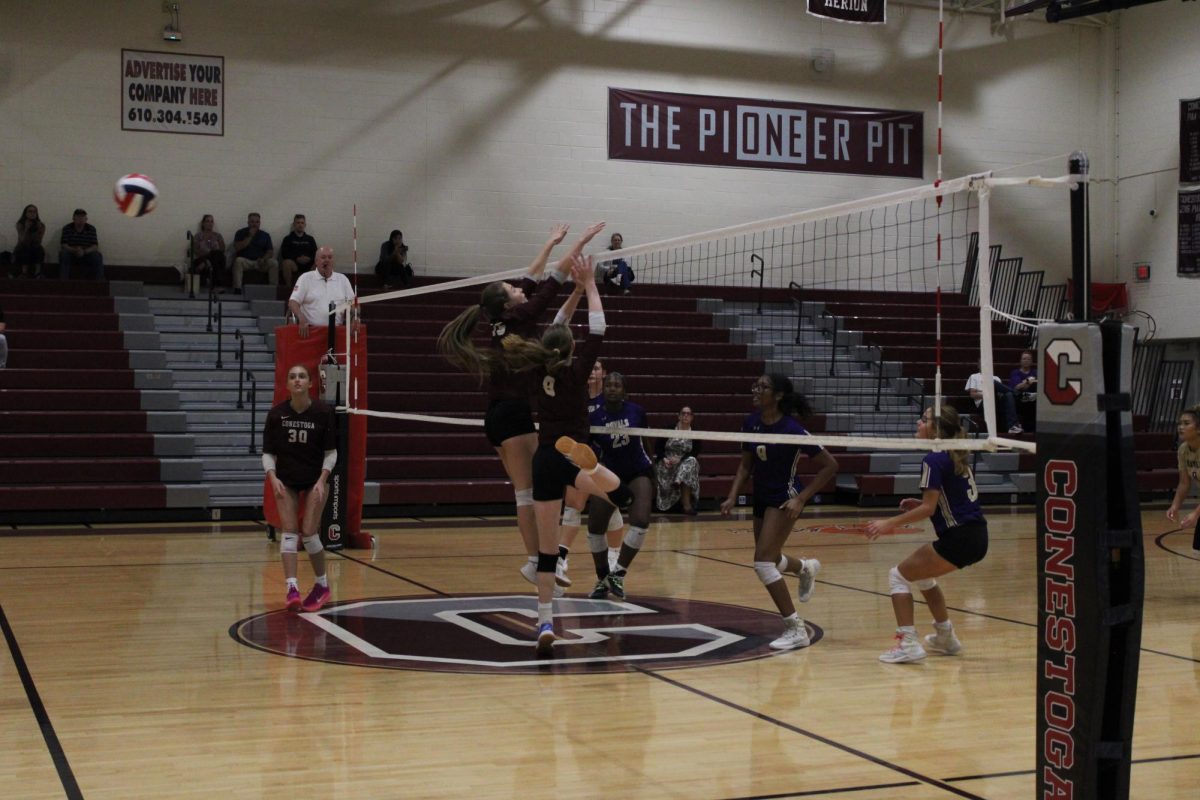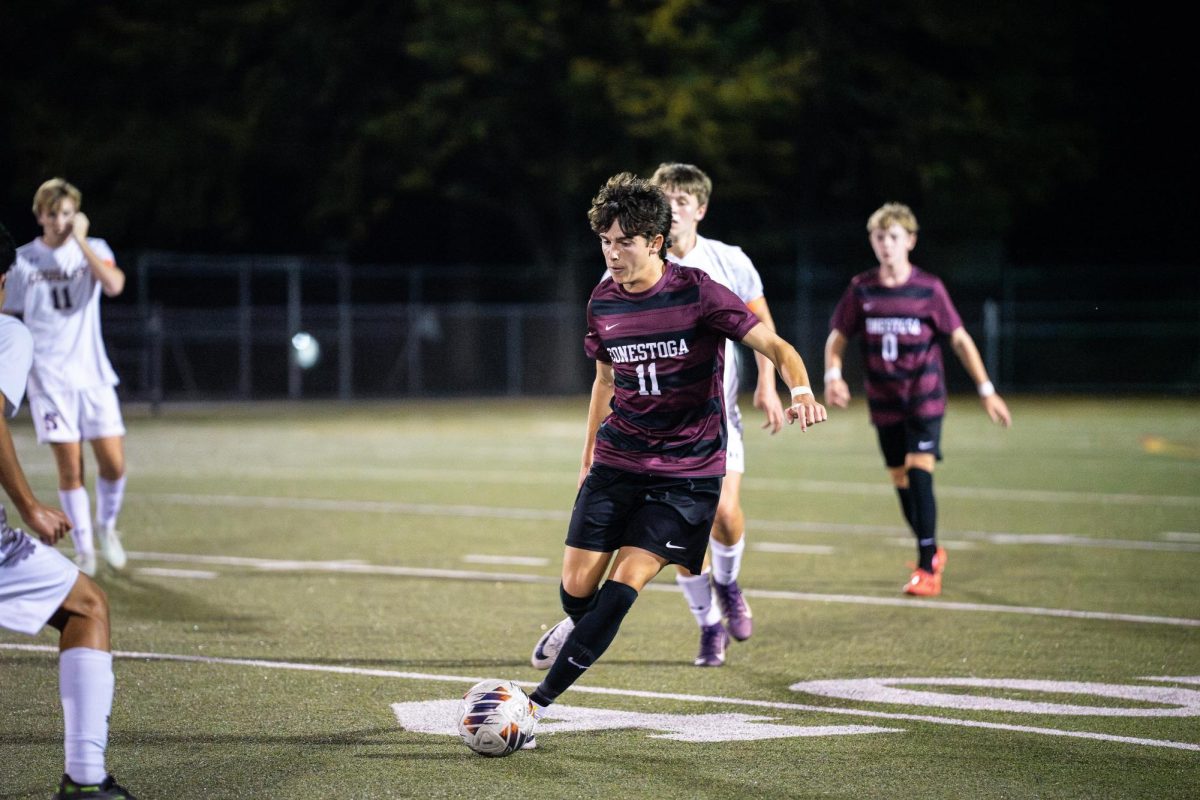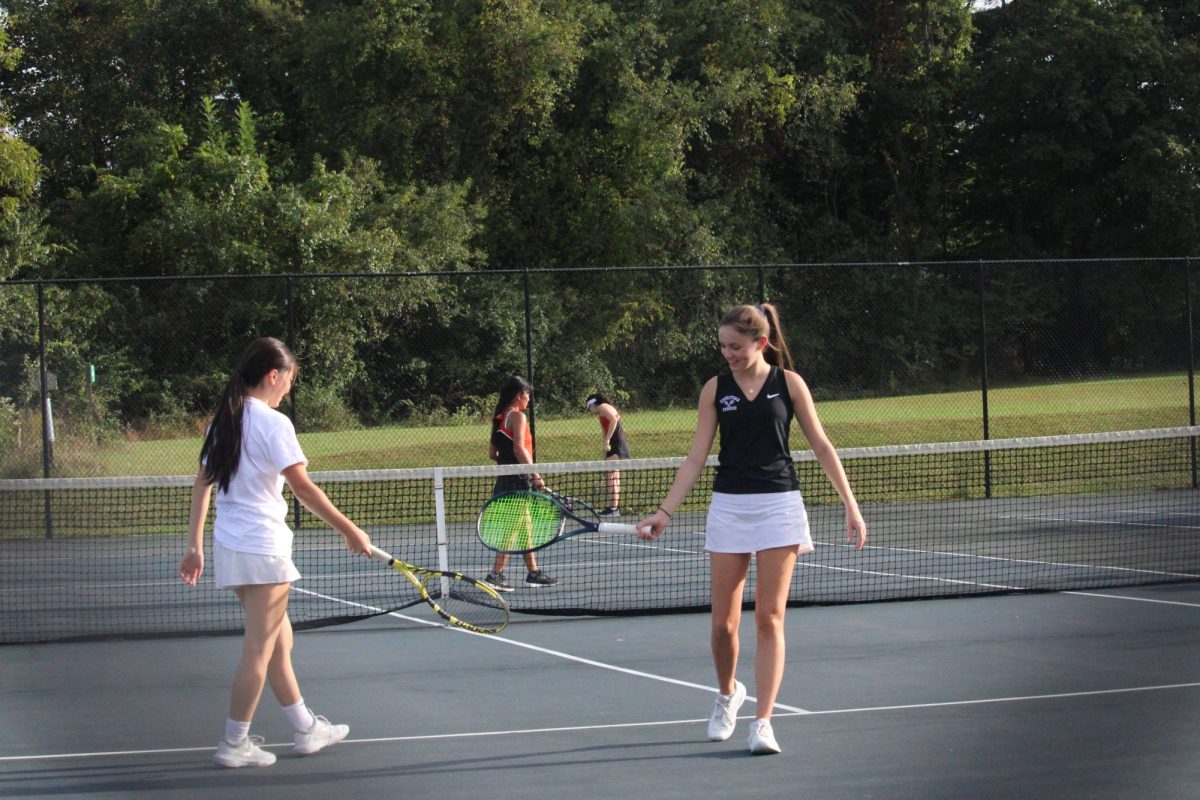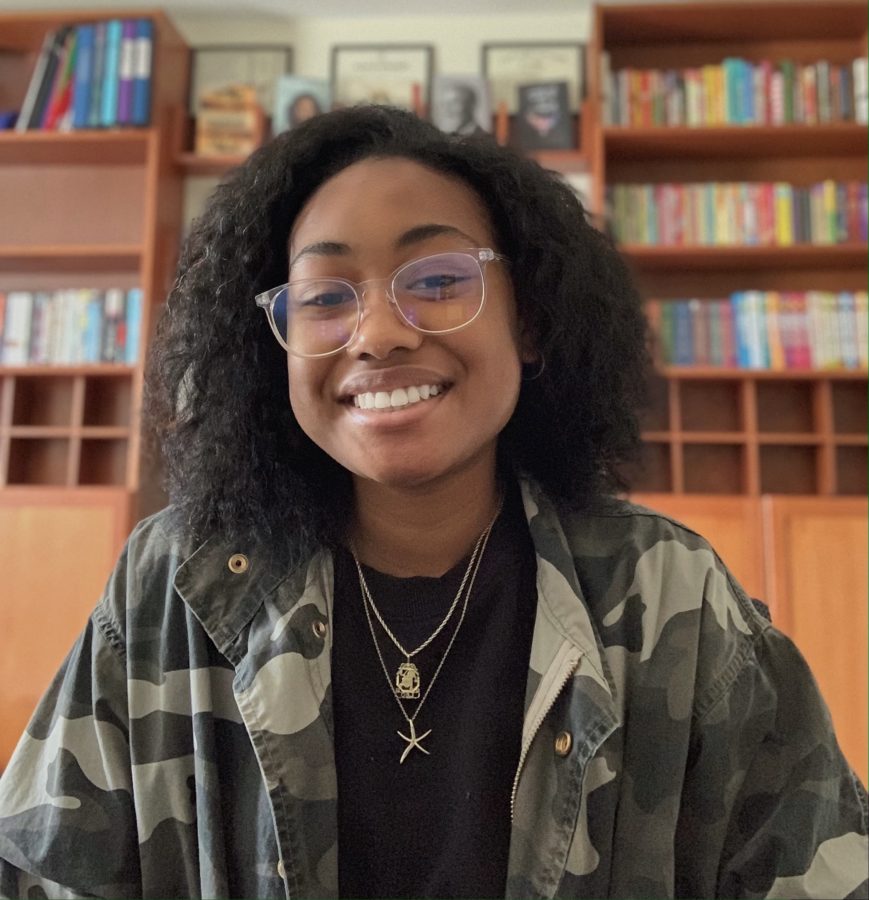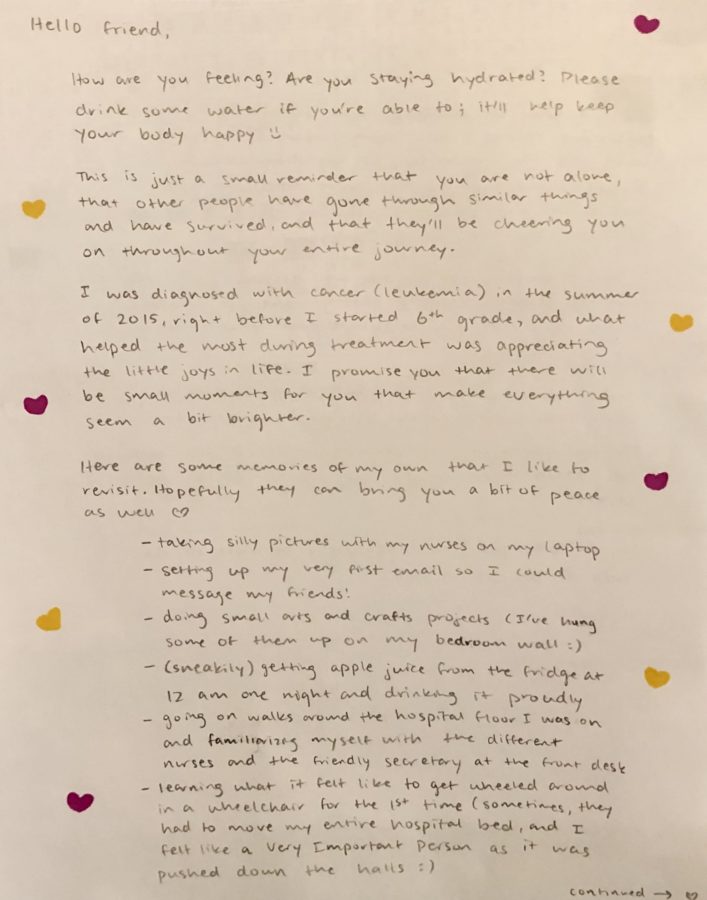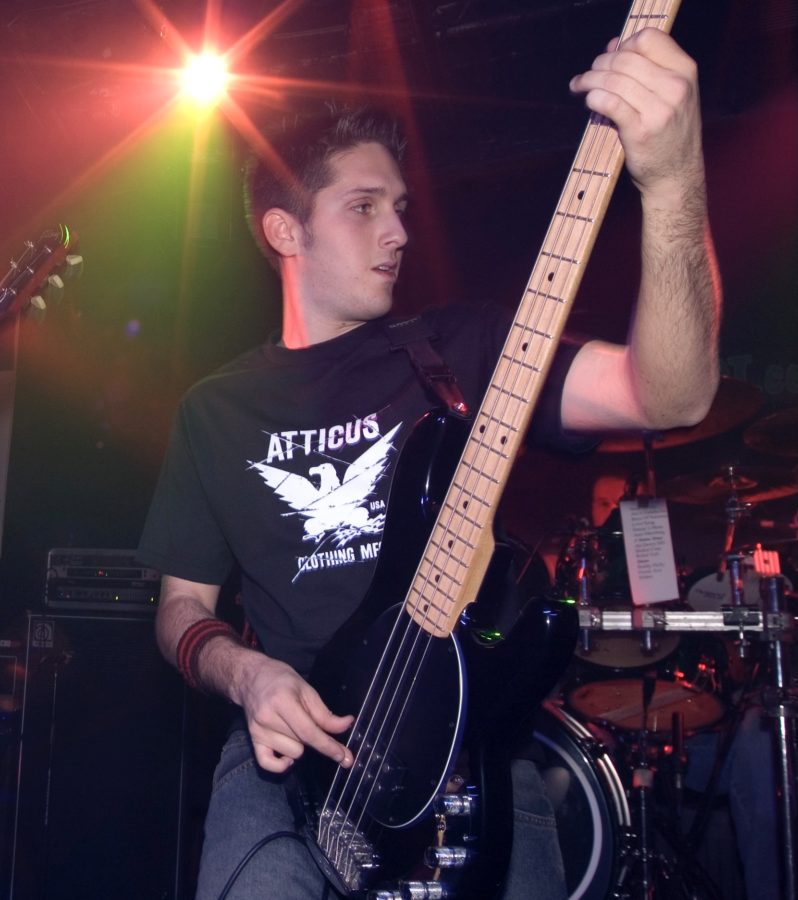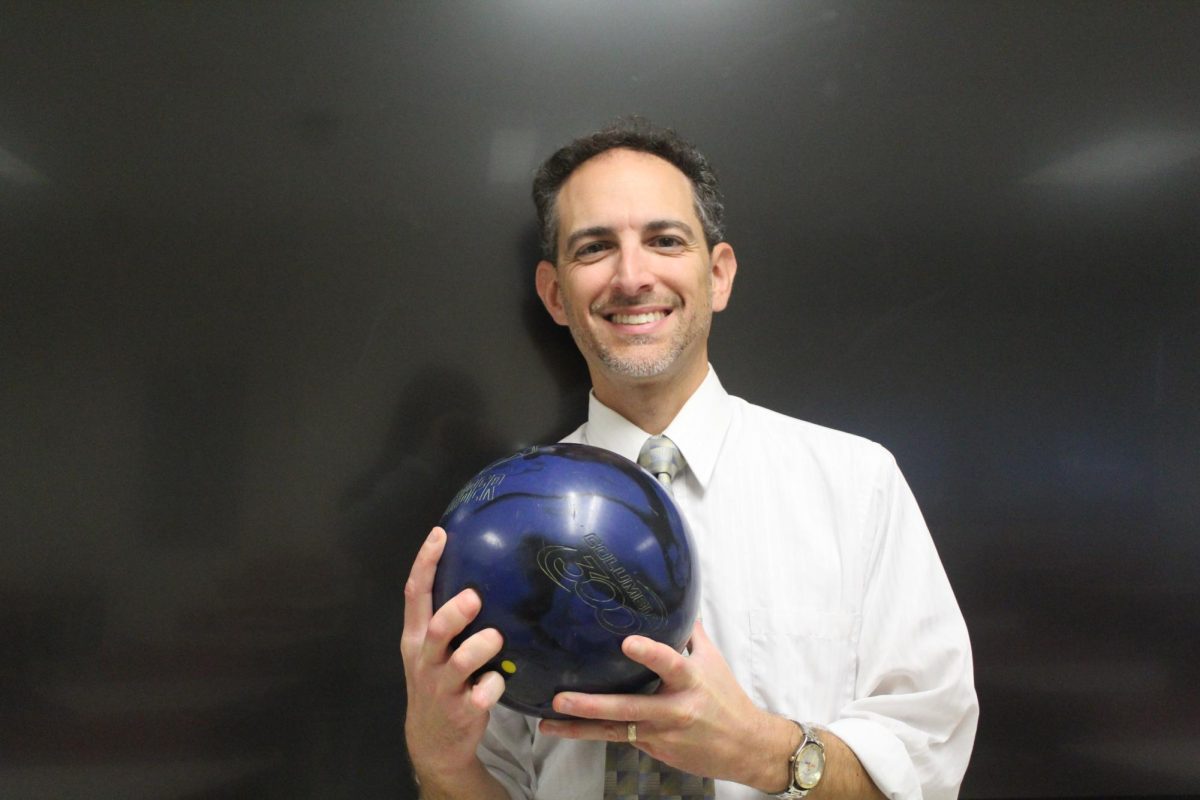By Reese Wang and Ananya Kulkarni, Design Editor and Sports Editor
Junior sprinter Henry Miller’s sophomore spring track season was cut short due to an injury. He had spent most of his winter season building up his strength, hoping to go all-out during spring.
“At the end of the winter season, I was where I wanted to be, until my spring season, I would hopefully start to be making strides towards getting PRs (personal records),” Miller said.
Miller’s comeback was interrupted when schools closed on March 13 due to the outbreak of COVID-19 in neighboring counties. According to a Schoology update by Athletic Director Kevin Pechin in the CHS Athletics group, Central League competition would resume as soon as schools reopened. However, on April 9, the Pennsylvania Secretary of Education closed all public schools in the state for the rest of the 2019-2020 school year, followed by PIAA canceling the remaining winter championships and spring season.
According to Miller, getting more recent times from this spring track season would have made recruitment easier. Track and field head coach Mark Carberry believes that missing the spring season wouldn’t adversely affect any singular athlete.
“Every single high school student is in the same exact boat. No one got to run a spring season. So, you know, if there was one kid that was going to be primed for this huge season and then a kid that was primed for a small season, we’ll never know,” Carberry said.
Boys’ lacrosse head coach Brody Bush typically spends the spring and summer seasons bringing college coaches to regular season games and taking prospective college athletes to recruiting tournaments. With all spring season games canceled and the fate of summer tournaments unknown, Bush recognizes uncertainty as a difficulty in recruiting during the coronavirus pandemic.
“It’s hard because no one’s been through this before,” Bush said. “The college coaches haven’t been through it, the high school coaches haven’t been through it and the players haven’t, so it’s all sort of new for everyone.”
With competitions gone, what to do now?
Sophomore Libby Winters has attended camps during the softball offseason at high academic schools since sixth grade to showcase her talents to college coaches there. Since she currently cannot play in front of college coaches, Winters works on improving all aspects of her game from home.
“For me, obviously working hard, keeping up with the game, keeping up with conditioning and just trying to stay in the best shape possible (is important) so that come summer when we can actually play again, I can put myself in the best position,” Winters said.

Another way athletes can show college coaches their skills is through making highlight videos from past games. Bush has always advised all of his players to make highlight videos, but he believes that videos are even more important with the absence of regular games and tournaments. The boys’ lacrosse team is subscribed to Hudl, a service that records all of the team’s games. Players can use the footage to create their own highlight videos to send to programs of interest.
On the receiving end of some of these videos is the head coach of Cabrini University’s Division III men’s lacrosse team, Steve Colfer, who usually recruits about half of each class from the Greater Philadelphia area. With no games or tournaments to travel to, Colfer has turned to highlight videos to search for talent.
“Obviously in an athletic recruitment, a live evaluation is the best. Not having that right now, we have to utilize a lot of the same technologies that everyone’s relying on every industry,” Colfer said.
In track and field, where times and personal records are the driving factors in recruiting, Carberry recommends his underclassmen to use this time to fill out questionnaires, pepper colleges with recent times and send emails to recruiting coordinators expressing interest in their programs. With prior experience as the recruiting coordinator at Division III Tufts University and Division I St. Mary’s University and Villanova University before coaching at ’Stoga, Carberry knows that kids who continuously express interest will be the ones to get preferential treatment from college coaches.
“I can reach out to thousands and thousands of kids, but the kids that were coming back and talking to me, those are the kids I knew who were really interested in what we were building, and those are the kids you want to work with at the end of the day,” Carberry said.
For juniors, who by the NCAA are allowed to have recruiting conversations with college coaches, expressing interest in programs is easier. Miller has emailed the coaches at most of the programs he’s interested in and has called two coaches who are also interested in him. He notes that, thanks to technology, staying in contact with coaches is easy.

Colfer believes the rapid adaptation of technology in recruitment will stay even after coaches are allowed to meet potential recruits face-to-face.
“Six weeks ago, if I were to Zoom call with the recruit’s parents, it would be somewhat awkward. Now, it’s not awkward at all,” Colfer said. “If I want to talk to a young man in Ohio, you used to only have the phone, and now I have the ability to use some of these different technologies and show him different things about Cabrini and the surrounding area without him having to drive eight hours to get to Cabrini before he decides, ‘hey, this might be a good fit for me.’ I think that there are some silver linings to this situation, and it can create advancements in an otherwise kind of, you know, not a great situation for any of us to be in.”
Reese Wang can be reached as [email protected]
Ananya Kulkarni can be reached at [email protected]









